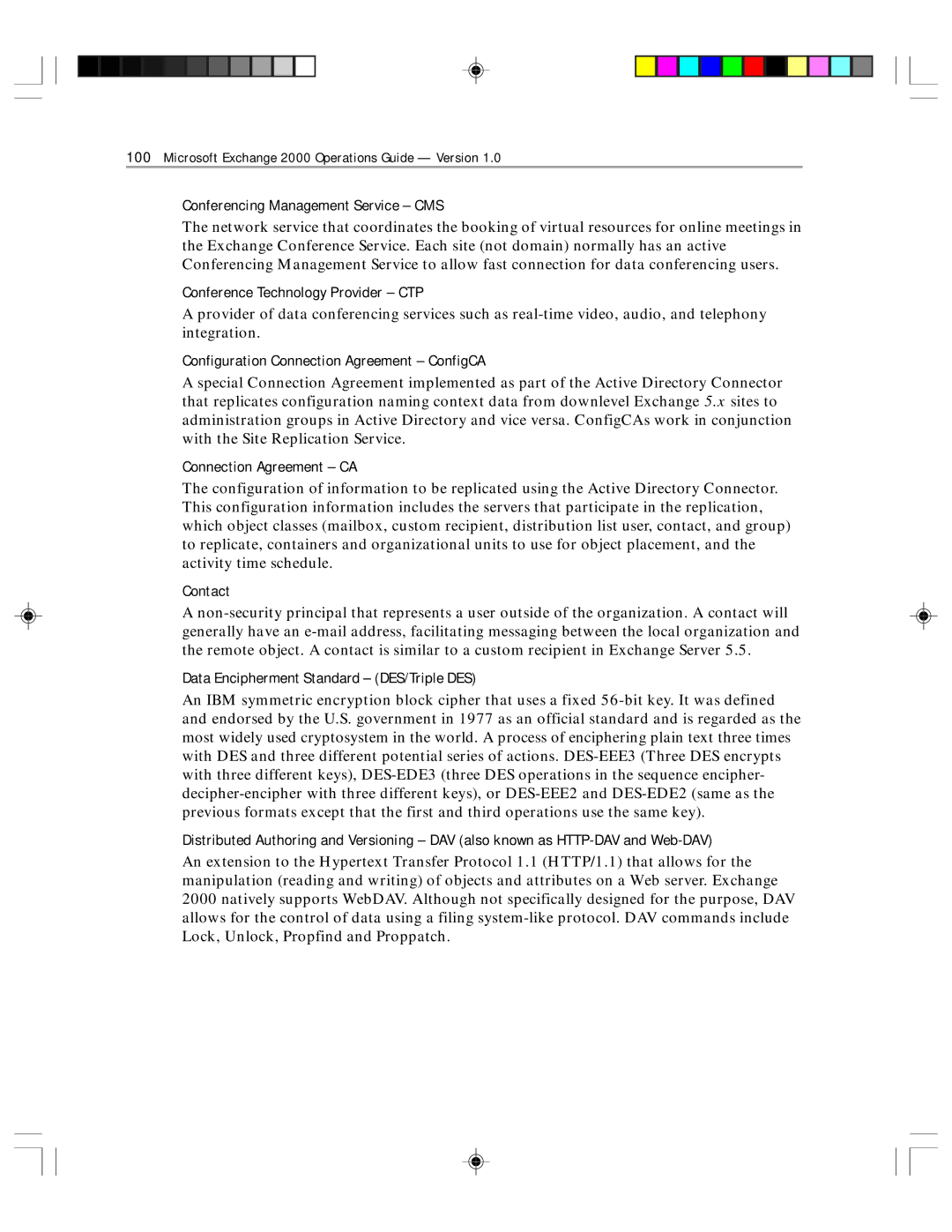
100Microsoft Exchange 2000 Operations Guide — Version 1.0
Conferencing Management Service – CMS
The network service that coordinates the booking of virtual resources for online meetings in the Exchange Conference Service. Each site (not domain) normally has an active Conferencing Management Service to allow fast connection for data conferencing users.
Conference Technology Provider – CTP
A provider of data conferencing services such as
Configuration Connection Agreement – ConfigCA
A special Connection Agreement implemented as part of the Active Directory Connector that replicates configuration naming context data from downlevel Exchange 5.x sites to administration groups in Active Directory and vice versa. ConfigCAs work in conjunction with the Site Replication Service.
Connection Agreement – CA
The configuration of information to be replicated using the Active Directory Connector. This configuration information includes the servers that participate in the replication, which object classes (mailbox, custom recipient, distribution list user, contact, and group) to replicate, containers and organizational units to use for object placement, and the activity time schedule.
Contact
A
Data Encipherment Standard – (DES/Triple DES)
An IBM symmetric encryption block cipher that uses a fixed
Distributed Authoring and Versioning – DAV (also known as
An extension to the Hypertext Transfer Protocol 1.1 (HTTP/1.1) that allows for the manipulation (reading and writing) of objects and attributes on a Web server. Exchange 2000 natively supports WebDAV. Although not specifically designed for the purpose, DAV allows for the control of data using a filing
